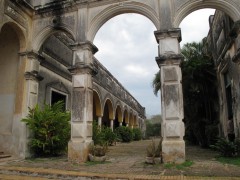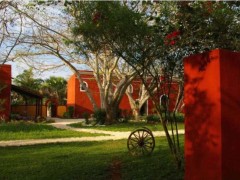Back to list of articles



|
The History of the Mexican Hacienda
These grand houses came to existence as a reward from the Spanish crown to loyal conquistadors and nobles during the time of Spanish colonial rule.
The hacienda would include a large land holding which would be fully self-sufficient with a church, store, hospital, school and agricultural activities, which in the in the areas surrounding Puerto Vallarta and Riviera Nayarit would include cattle farming and mining. Hundreds of people would live on one estate and there was a clearly defined social and economic hierarchy starting with the landowner, or hacendado, and including administrators, priests, teachers and clerks. And lowest on the hierarchy were the indigenous peoples who worked on the hacienda in virtual bondage.
The central architecture of the hacienda was the large house that would be home to the hacendado and his family. These homes were built in different styles but the most traditional will have a large, open center courtyard with gardens, paths and fountains. High ceilings, gracefully archways, heavy wooden doors, elaborate tiles and bright colors are all architectural and design features of haciendas in Mexico.
During the Mexican Revolution, the hacienda system was banished and many of the vast houses on the estates were badly damaged or left to fall into disrepair. But now many of these grand homes have been lovingly restored and find new life as hotels, cultural or conference centers.
|
|
The history of the Mexican hacienda is lengthy and detailed both culturally and politically.
|
|
Speak with your Luxury Beach concierge about visiting a hacienda and seeing some of the most beautiful and traditional architecture in Mexico.
|
|
|
|
|

